North Queensland






Beyond Darwin: Batchelor
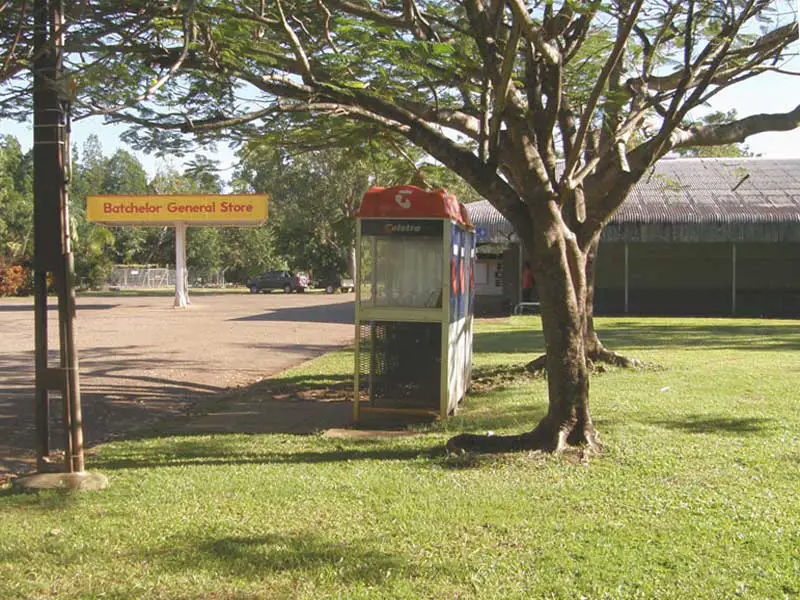
A small town which once serviced the uranium mines of Rum Jungle, but today marks the entrance to Litchfield National Park, one of the Northern Territory’s most beautiful and untouched parks.
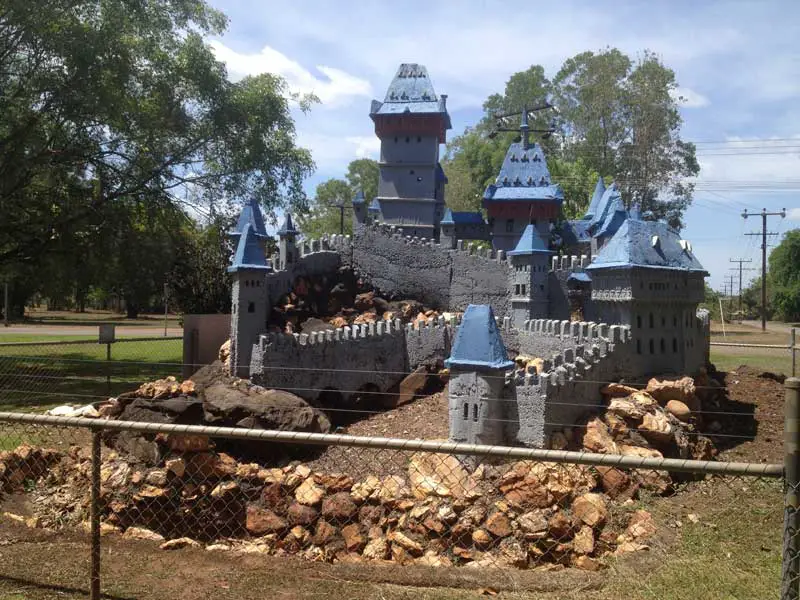
Havlik Park honours Bernie Havlik, a Czechoslovakian migrant who worked at the Rum Jungle mine. After its closure in 1971, he worked in a town garden crew, which was responsible for establishing a large Cypress Pine plantation on the sirte of the current Darwin Crocodile Farm. Bernie also planted Batchelor’s first pine and mango trees.
In his work on the gardening crew, he was giving the task of tidying up the site of what is now Havlik Park. He solved the problem by covering it with a replica of Karlstein Castle, the original of which still stands today in Bohemia. On the day he died, he was putting the finishing touches to it.
Places of Interest: Litchfield National Park (Wangi Falls, Florence Falls, Tolmer Falls, Sandy Creek Falls, Buley Rockhole); Berry Springs; Rum Jungle mining remnants; Batchelor Butterfly Park and Tropical Retreat.
Location: 98 km south of Darwin
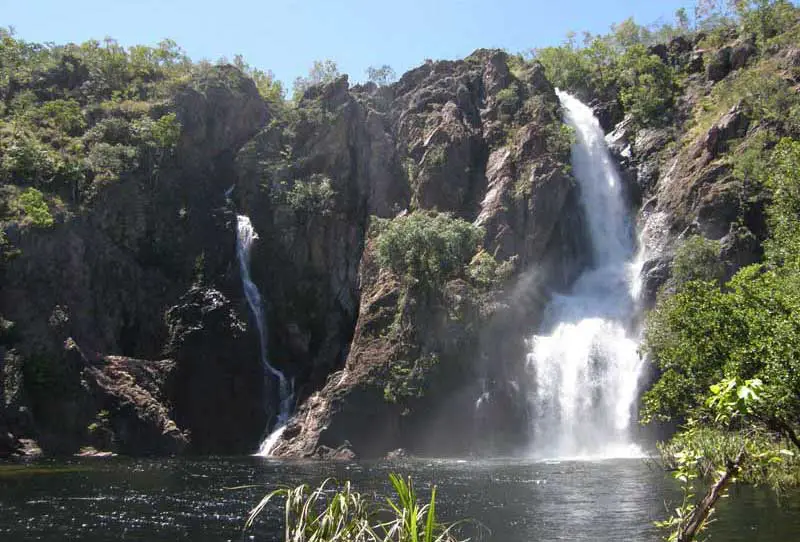
Litchfield National Park protects good examples of most of the Top End habitats. It also features numerous waterfalls which cascade from a sandstone plateau called the Tabletop Range, intriguing magnetic termite mounds, historical sites, and the weathered sandstone pillars of the Lost City. Being less than two hours drive and just over 100 km south-west of Darwin, Litchfield National Park makes the perfect same day destination for visitors to Darwin wanting to experience the bush in the Top End without going too far off the beaten track.
The Park contains several types of typical Top End habitats including lush monsoon forests, magnetic termite mounds, unusual rock formations, numerous waterfalls (Florence, Tolmer and Wangi Falls are definitely worth seeing) and cascades. The weathered sandstone pillars of The Lost City are worth a look, but a 4 wheel drive vehicles is required. Otherwise, an ordinary car will take you to most features.
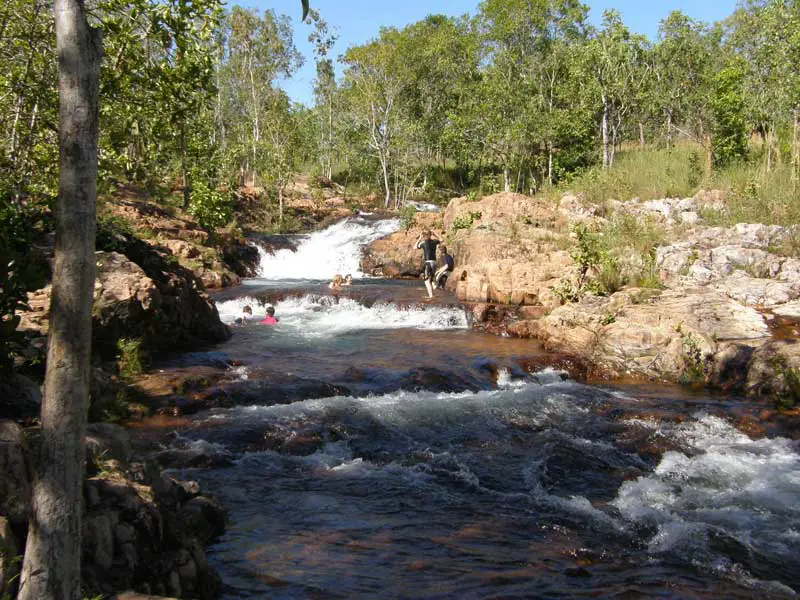
Buley Rock Pools is a popular swimming oasis on the way to Litchfield National Park. It features a seemingly endless cascade of river and deep pools stepped down one after the other. When the residents of Darwin are feeling hot and bothered and need a place to relax and cool off, this is where they go. Because of this, and it being on the way to Litchfield, it can get very crowded with both locals and tourists josstling first for a parking spot and then a place to take a dip, so if you are a visitor, try and avoid coming here on a weekend, public holiday or during school holidays.
Batchelor was a small settlement of little significance, known for its Chinese market gardens which grew vegetables for the people of Darwin, until it became a major Allied forces air base during World War II.
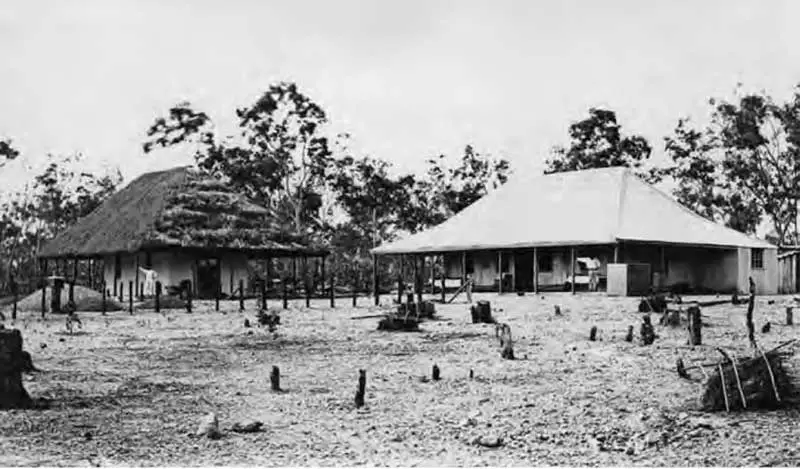
Henry Poett’s coffee plantation buildings
In 1882, Henry Poett, a migrant from Ceylon (Sri Lanka), introduced the growing tropical products such as coffee in northern Australia when he established a 3,793-acre coffee plantation at Rum Jungle near Batchelor. Poett had experience growing coffee in Ceylon and believed plants grown there would thrive if planted in northern Australia as their climates and growing conditions were similar. In addition to coffee, Poett planted India-rubber, Cotton, and Maize. Initially, the project was quite successful, but later failed through the lack of funds to develop the project, and from the excessive wages demanded by the men who worked on the plantation.
The town came to life in 1952 when Rum Jungle’s uranium deposits began to be mined. It returned to its former quiet state when the uranium mine closed in 1963 and the treatment plant closed down in 1971. Today the town of Batchelor survives on tourism.
Origin of name: named after the South Australian Labour politician Egerton Lee Batchelor (1865-1911) who became Minister for the Northern Territory in 1911.
Rum Jungle came into existence in 1872 when the Overland Telegraph Line construction party found gold at Yam Creek. It subsequently became a popular resting place, first for the miners, then for teamsters because the area offered good food and water (a Mr Lithgow built The Rum Jungle Hotel out of rough timber and sheets of stringy bark in 1874). In 1884 teamsters massacred a number of local Aborigines (men, women and children) to revenge the deaths of four white prospectors at the Daly River copper mine. The completion of the railway from Darwin to Pine Creek led to the demise of the hotel which was closed down in 1889. Rum Jungle came to life again in the 1950s when it was the site of a busy uranium mine.
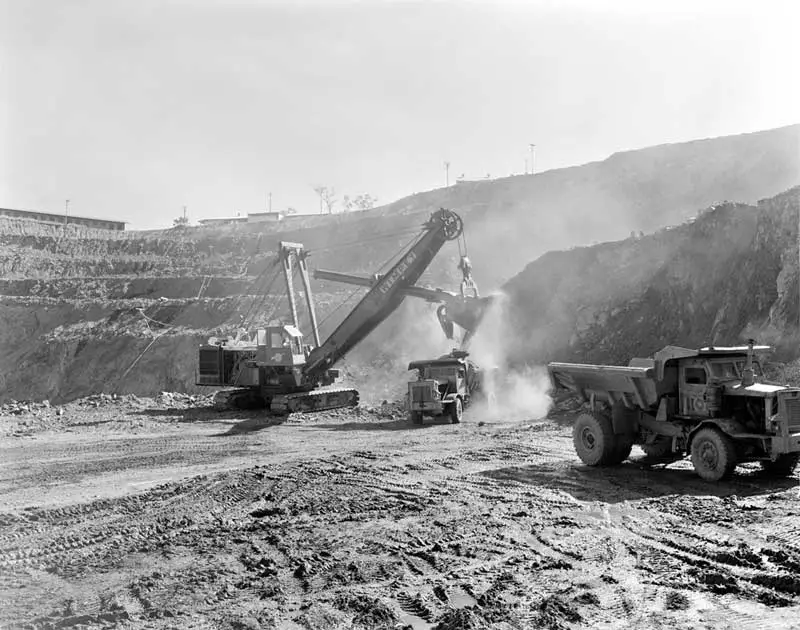
Surveyor George Goyder had noted an unidentified copper-like green ore in 1869 at Giants Reef, which was later “rediscovered” and identified to be torbernite. In 1949, John Michael “Jack” White discovered torbernite in old nearby copper shafts. Three years later the Australian Government funded the setting up of the Rum Jungle mine and treatment plant to provide uranium oxide concentrate to the UK-US Combined Development Agency under a contract which ran from 1953 to 1962. Rum Jungle was then the largest construction in the Northern Territory. The Government, through the Australian Atomic Energy Commission, was responsible for the mine, although management of it was on a contract basis by Territory Enterprises Pty Limited, a subsidiary of the Rio Tinto Group. The town of Batchelor was built to accommodate the mining personnel, 8 km south of the mine.
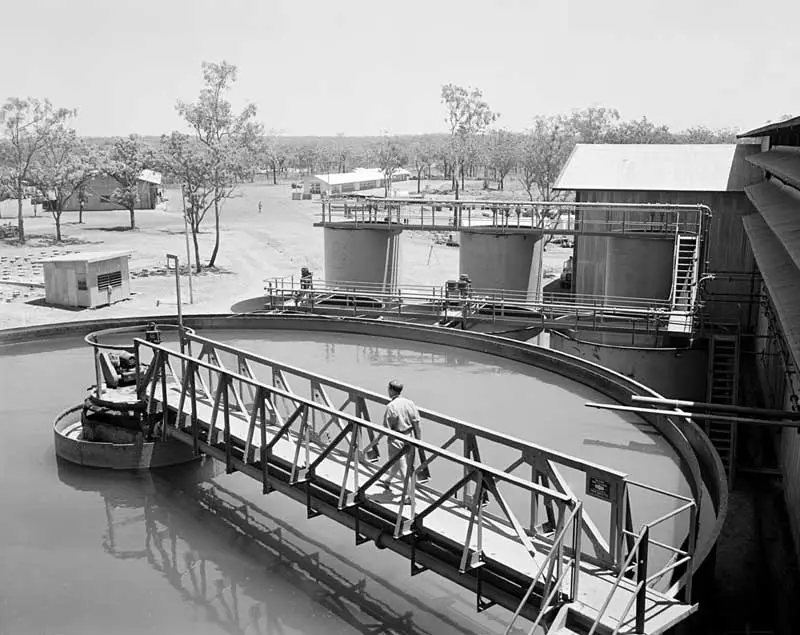
Rum Jungle mine treatment plant
The Rum Jungle mine closed in 1971 amid many protests on whether or not Australia should be mining and selling uranium. An initial attempt to clean up Rum Jungle was made in 1977, which led to the setting up of a working group to examine more comprehensive rehabilitation. A $16.2 million Commonwealth-funded program got under way in 1983 to remove heavy metals and neutralise the tailings. One of the principal problems associated with rehabilitating the Rum Jungle Creek South open cut was that the area was converted to a lake after mining ceased, and as the only water body in the Darwin region not infested with crocodiles, the site quickly became very popular with locals and Darwin residents as a recreation reserve including activities such as swimming, canoeing and scuba diving.
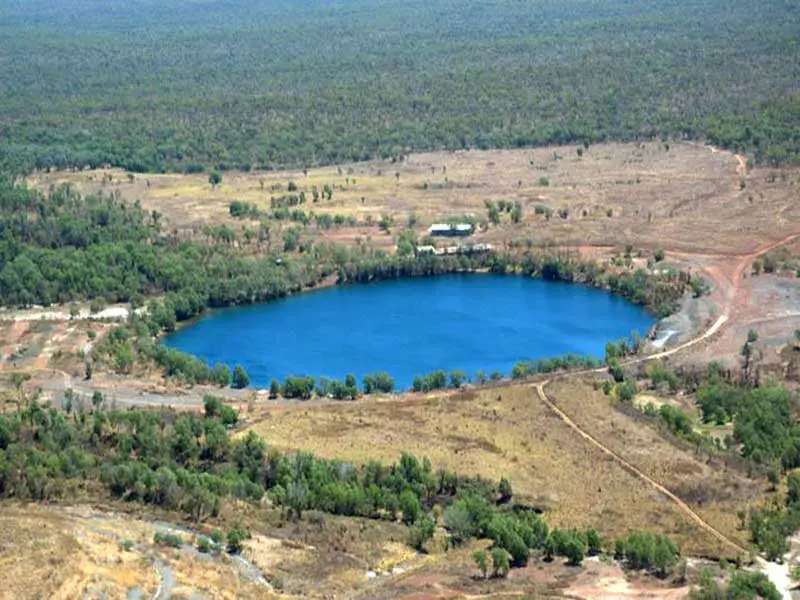
After mining, the area suffered elevated gamma radiation, alpha-radioactive dust, and significant radon daughter concentrations in air. These levels were so high that in the late 1980s it was decided that something had to be done. A $1.8 million program to improve Rum Jungle Creek South waste dumps was undertaken in 1990. One of the main environmental impacts of uranium mining is the creation of large volumes of radioactive mine waste (tailings) which are left behind on the site. The major radioactive component of these tailings is uranium-238, an isotope with a halflife of 4.46 billion years. In 2003, a government survey of the tailings piles at Rum Jungle found that capping which was supposed to help contain this radioactive waste for at least 100 years, had failed in less than 20 years. The Territory and Federal Governments continue to argue over responsibility for funding rehabilitation on the polluted East Finniss River Contamination of local groundwater has yet to be addressed.
The reason for the name is unclear, though there are three stories which give varying explanations as to its origin. The officially accepted story is that the jungle and adjoining land gained its name from an incident around March 1873 when John Lewis’ teamsters, whilst carting stores from a small port town across the harbour from Darwin named Southport to the mining fields around Pine Creek, tapped a cask of rum here and delayed the team for several days. The jungle, 38 kilometres south of Southport was used as a teamsters camp because of the availability of good spring water and grass. Another explanation, according to Jessie Litchfield in her ‘Far-North Memories’, suggests that it was so named ‘because a party of government officials once went there on important departmental business. They were lost among their empty bottles, and a relief party was sent out to show the way to go home’. A third suggestion is that the local hotel keeper once ran out of all liquor apart from rum and one of the campers dubbed the place Rum Jungle because rum was all there was to drink in the middle of the jungle.
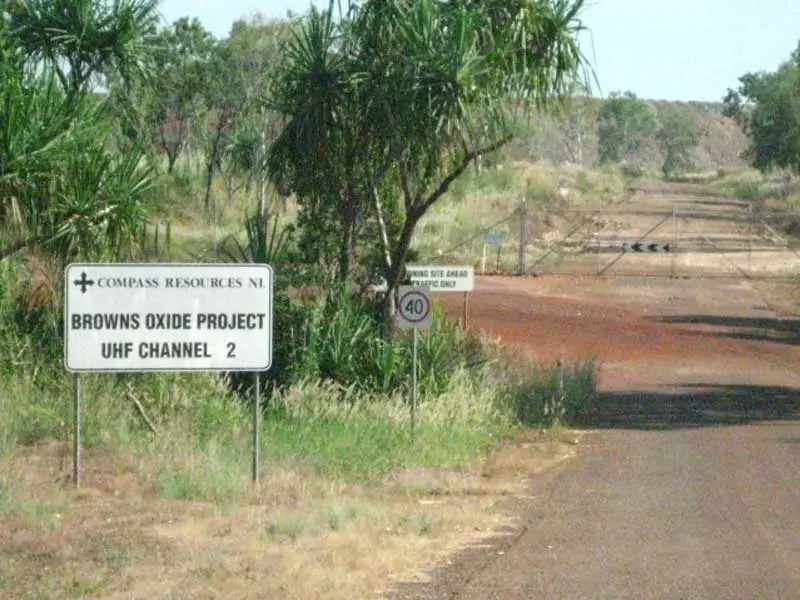
Mount Fitch is a former uranium mining site located 13.4 kilometres north east the town of Batchelor. Mount Fitch is located alongside the old Northern Railway corridor that ran from Pine Creek to Darwin. It is an ecologically sensitive area due to its very close proximity (1600 metres) to the catchment area of Darwin River, the river that is the source of Darwin’s drinking water supply, Darwin River Dam.
In 1950 two geologists, named Ward and Gates, discovered yellow secondary uranium minerals in limestone throughout the area. Radiometric contouring and geological mapping was completed later the same year. Mining commenced in 1965 and is part of the old Rum Jungle workings. Compass Resources worked in the area for many years and mostly focused on the Browns deposit, a copper-cobalt-nickel deposit close to the old open pit; in 2006 some 4050 tonnes Uranium Oxide deposits remained at Mt Fitch. In 2005, Compass Rescources lodged an application for a mining project focussing on cobalt, nickel and copper mining. The Browns Oxide Project is not targetting uranium, however, Compass acknowledges that at some future point it would be interested in mining uranium at the nearby Rum Jungle site over which it holds a lease.




